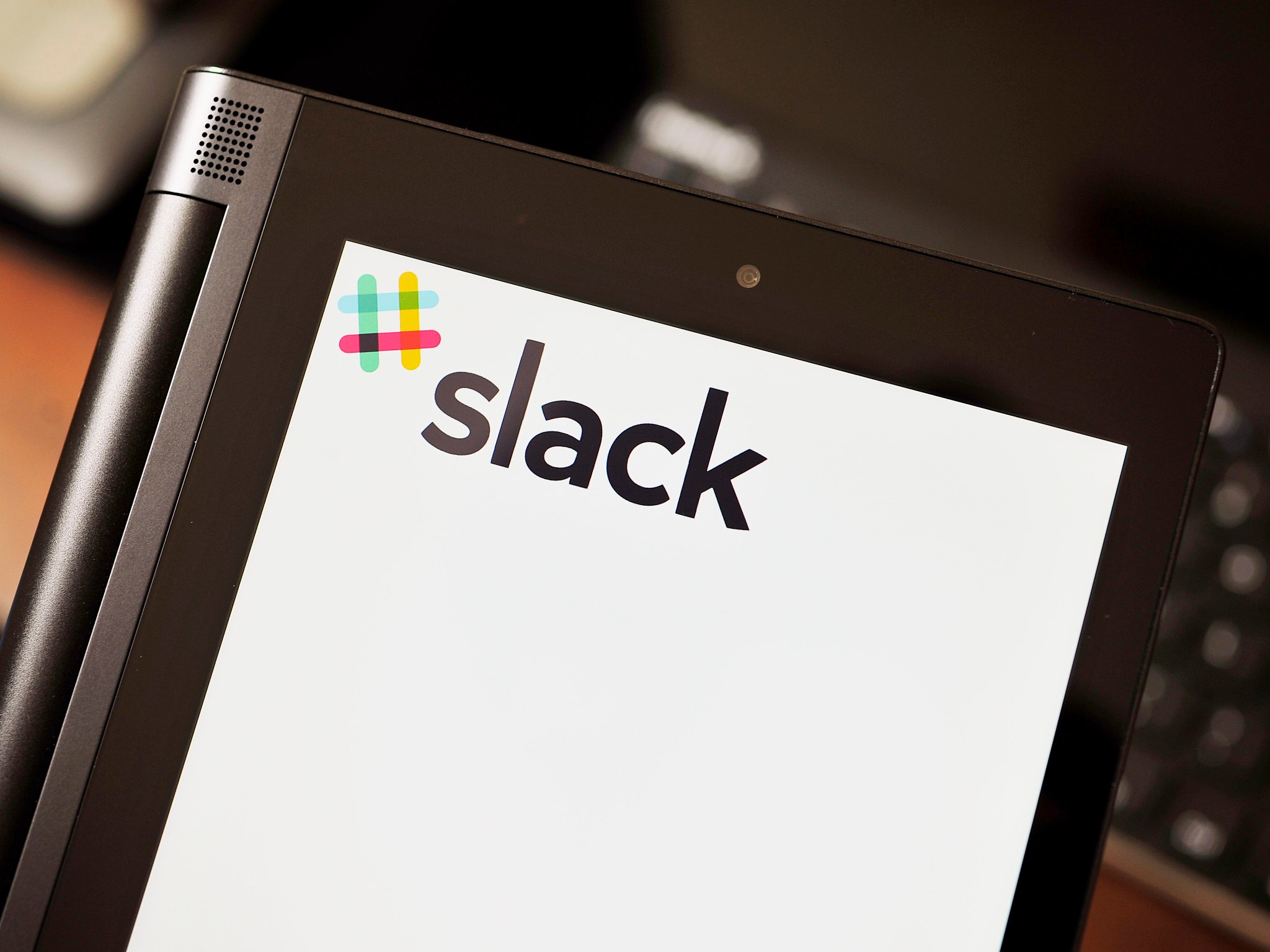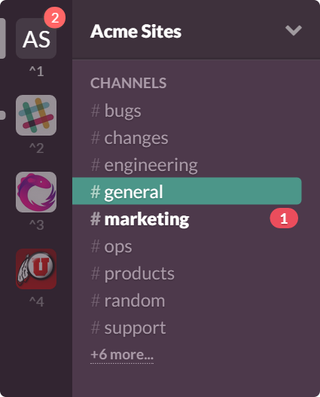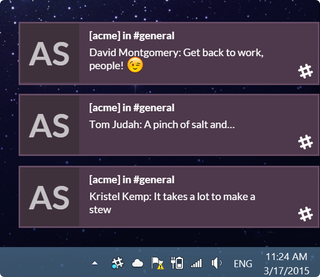Ditch your browser as Slack announces official app for Windows desktop

Today, Slack (Slack.com) is launching their official app for Windows desktop users, including support for Windows 7 up through the Windows 10 preview. Slack is one of the fastest growing online collaboration services, and the firm boasts some impressive growth numbers since its inception.
If you have never heard of Slack, think of it as your own private app for chatrooms. It is a free service used for 'team communication' letting users create individual rooms with an unlimited amount of users. Confession: we use it on Windows Central and Mobile Nations every single day.
The Slack app is a true x86 desktop application, which is perfect for enterprise and legacy users. The app runs in the background, updates automatically and it even has notifications. The big selling point with the app is you have one less browser tab to worry about.
Slack announced a beta of the desktop app a few weeks ago. This release looks to replace that version, although if you are already in the beta, today's release looks to be the same recent build.
A Slack client for Windows Phone is currently in private beta and is expected to launch in the coming weeks.
Download Slack for Windows Desktop (Free)
See the press release for more information.
Get the Windows Central Newsletter
All the latest news, reviews, and guides for Windows and Xbox diehards.
Source: Slack HQ
Press the Start Button: Slack for Windows Has Arrived
In the past week alone, 365,000 people have logged in to Slack from their web browser on Windows, and (we imagine) yearned for something more. More than 30% of our users run Windows, and their disappointment in the lack of desktop app has been noted. Today, we provide our answer:

There's been a constant hum of requests in feedback tickets and tweets: the request for a Windows app to match our Mac app — and one that provides the experience users expect from a native Windows application. We've worked hard to make it as good as people expected.
How is this different from just working in the browser?
Slack for Windows brings all the functionality you get in your browser into a standalone version that sits, contentedly, on your desktop. It runs on Windows 7 and above (even the Windows 10 Preview!), installs simply, updates itself automatically, and remains generally courteous throughout.

No more browser tabs for you.
Maintaining multiple teams in the browser means keeping one tab open per team, and as we all know, tab real estate doesn't come cheap these days. Enter the Team Switcher. All of your teams, perched on the left pane and organized however you see fit (with handy keyboard shortcuts).
For anyone used to notifications in the web version, the notifications in the app go above and beyond. Each one is hand-crafted and locally sourced to match your team's theme. Whenever you receive a notification, we'll light up the taskbar so that you know something's up, even when you come back to your desk. And if you're busy — doing an important presentation, perhaps? — we'll keep it to ourselves until you're done. We're very polite that way.

The usual suspects of Windows preferences are available for your customization. When the window is closed, Slack for Windows will run from the tray, unseen but still heard. Clicking the tray icon will summon the app to do your bidding once more. And of course, no Windows app would be complete without the option to automatically launch on login.
We want Slack to be a great experience for everyone, whether you're using your laptop, your computer, or your toaster oven. We don't have anything from our toaster oven department to share today, but we have worked hard to create an app that Windows users deserve.
We hope that you love it.

Daniel Rubino is the Editor-in-chief of Windows Central. He is also the head reviewer, podcast co-host, and analyst. He has been covering Microsoft since 2007 when this site was called WMExperts (and later Windows Phone Central). His interests include Windows, laptops, next-gen computing, and wearable tech. He has reviewed laptops for over 10 years and is particularly fond of 2-in-1 convertibles, Arm64 processors, new form factors, and thin-and-light PCs. Before all this tech stuff, he worked on a Ph.D. in linguistics, performed polysomnographs in NYC, and was a motion-picture operator for 17 years.